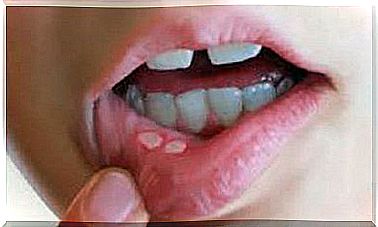Diabetes Insipidus: Diagnosis And Treatment
The main symptoms of diabetes insipidus are frequent urination and constant thirst. Those affected excrete between 3 and 30 liters of water in their urine every day. We’ll tell you what causes this condition and how it’s diagnosed and treated.

Diabetes insipidus is a disorder that occurs as a result of a total or partial deficiency in a substance called vasopressin. It also occurs when the body does not absorb this substance. The most typical symptom of this condition is polyuria, which means that the person has to pass excessive amounts of urine. Below we go into more detail about the symptoms, diagnosis, and treatment of diabetes insipidus .
There are two forms of diabetes insipidus (DI): central DI and nephrogenic DI. In both cases it can be either primary or secondary. The primary diabetes insipidus has genetic causes, while the secondary form is acquired. In addition, the central DI has its origin in the hypothalamus and is the most common form. Nephrogenic DI, on the other hand, is produced in the kidneys.
As we mentioned earlier, the main symptoms of diabetes insipidus are polyuria, polydipsia, and excessive thirst. Patients with this condition can pass between 3 and 30 liters of urine per day. And if they fail to replenish their fluids in a timely manner, this can lead to dehydration and / or hypovolemia.
The causes of diabetes insipidus

Diabetes insipidus occurs when the body is unable to regulate the body fluids. Under normal circumstances there is a balance between the amount of fluids a person ingests and that which the kidneys excrete. In diabetes insipidus, the body is unable to maintain this important balance.
The excretory function of the kidneys is controlled in large part by the production of an antidiuretic hormone. This hormone – vasopressin (ADH) – is produced in the hypothalamus and then stored in the pituitary gland. When the body begins to dehydrate, it releases this hormone into the bloodstream.
The vasopressin then activates the kidney tubules. This in turn causes the urine to concentrate and causes the tubules to release a certain amount of water into the bloodstream. The goal of this process is to prevent the water from being lost through the urine.
Central diabetes insipidus involves damage to the hypothalamus or pituitary gland. This damage limits the production, storage, or release of vasopressin. In nephrogenic diabetes insipidus, there is a malfunction in the renal tubules. As a result, they don’t respond to the hormone vasopressin the way they should.
diagnosis
In general, some tests are needed to diagnose diabetes insipidus. Because the symptoms of this disease are similar to those of many other diseases. Also, when diagnosing, the doctor must determine exactly what type of DI the patient is suffering from, which makes the process even more complex.
Doctors usually do the following basic tests:
- The water deprivation test (thirst test ) is the test that is done most often. The patients have to refrain from taking liquids for a certain period of time under medical supervision. The attending physician will then examine the effects of dehydration on blood, body weight, urine production, and urine concentration.
- Urinalysis. During this examination, the concentration of the urine is determined. It determines how much water it contains in relation to other substances that the body excretes.
- MRI. This type of examination provides detailed images of the brain tissue. As a result, specialists can tell if there is an abnormality in the pituitary gland or in the areas of the brain around it.
Treatment of diabetes insipidus

Treatment for diabetes insipidus will depend on the specific form of DI the patient is suffering from. In general , the treatment of central diabetes insipidus involves hormonal changes and the correct treatment of the correctable causes. However, incorrect and improper treatment can lead to permanent kidney damage.
Doctors usually prescribe desmopressin for the patient. This is a synthetic analogue of the hormone vasopressin. It has vasoconstrictor and antidiuretic properties that have a long-term effect. Most often it is given in the form of a nasal solution. Alternatively, the attending physician can also inject it under the skin. However, this should only be done in emergency situations.
In some cases, non-hormonal drugs can also be used to treat diabetes insipidus. There are three different groups of drugs: prostaglandin inhibitors, thiazide diuretics, and vasopressin-releasing drugs. When these three drugs are combined, positive treatment results can usually be achieved.
However, if the patient has nephrogenic DI, other treatment will be given. In this case, it usually includes diet and medication to reduce the amount of urine. In addition, doctors usually prescribe non-steroidal anti-inflammatory drugs (NSAIDs) and thiazide diuretics. In addition, experts recommend a diet that is low in salt and protein. And of course, treating diabetes insipidus of any type is always about avoiding dehydration.









